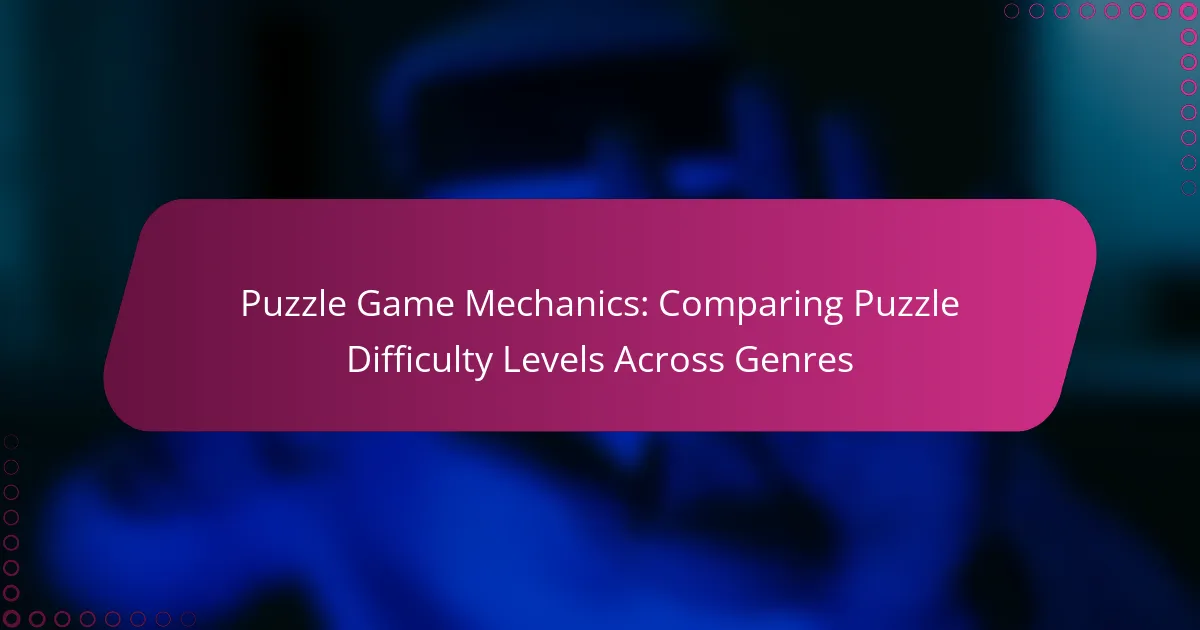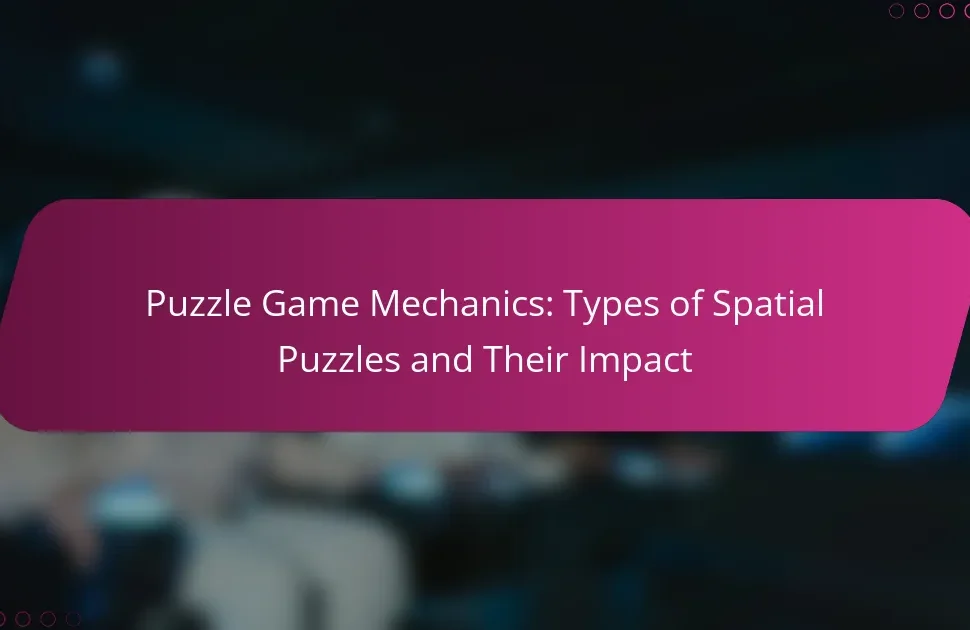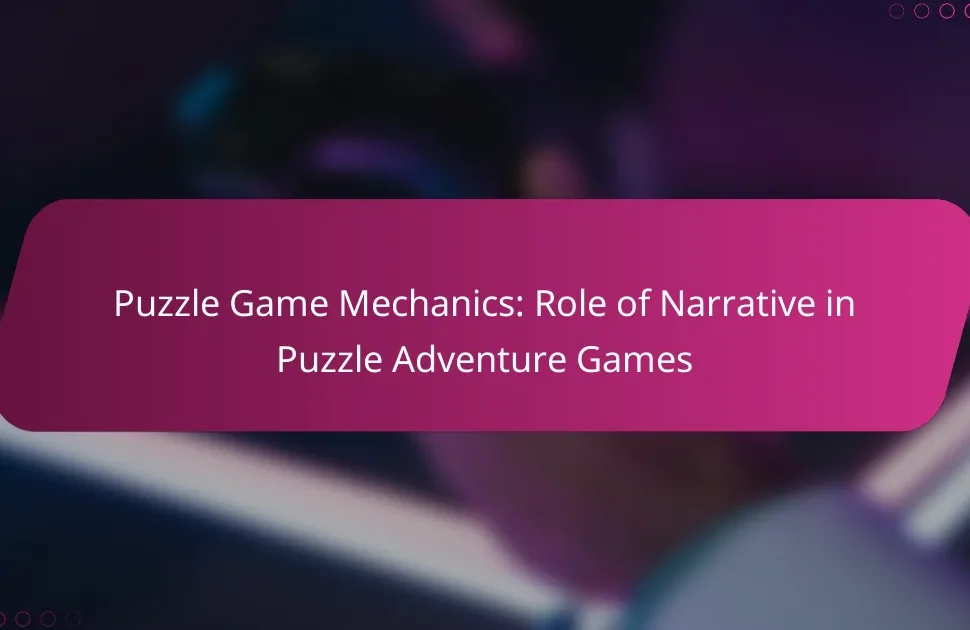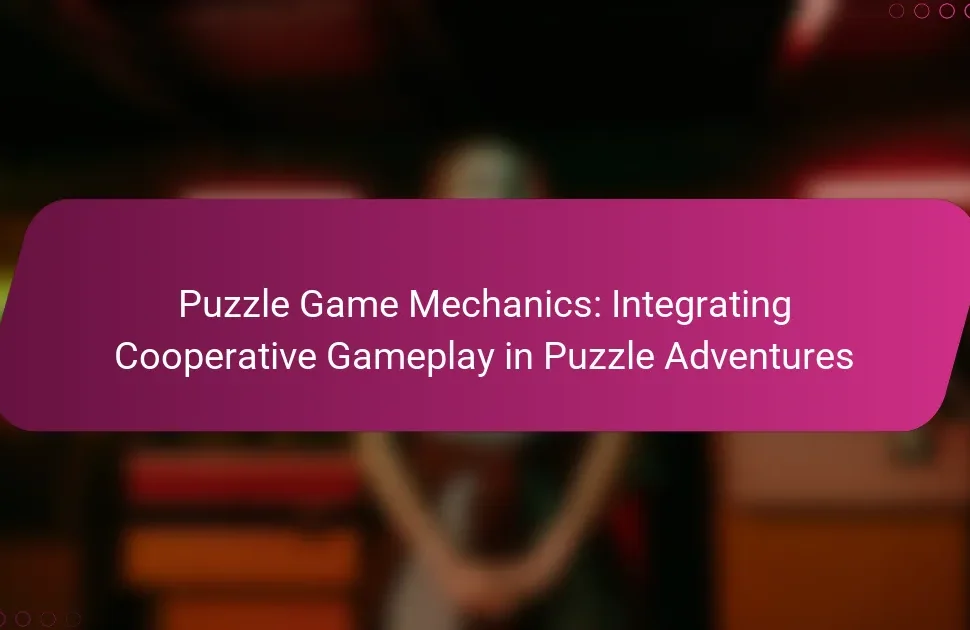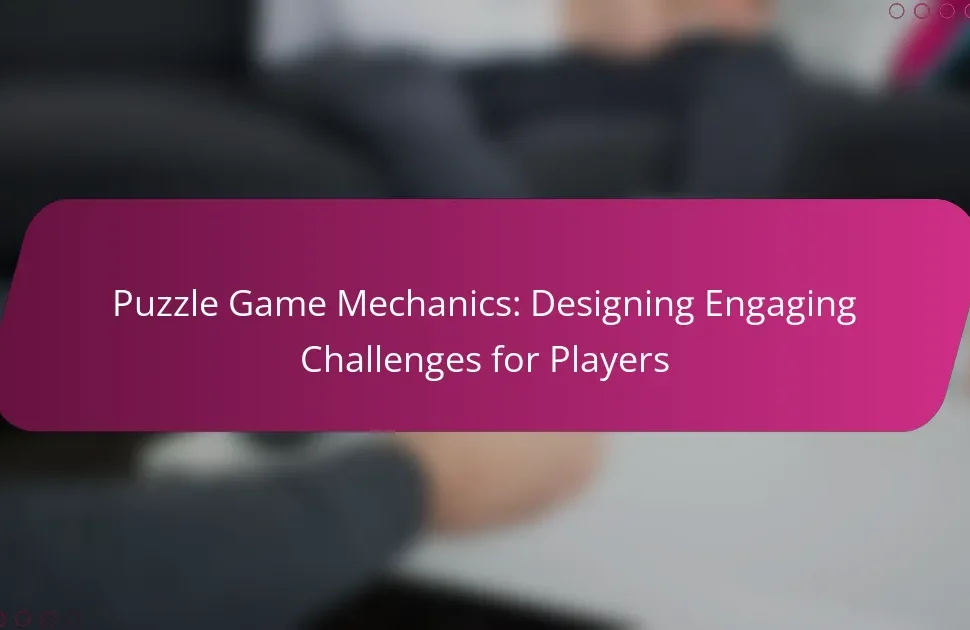Understanding puzzle game mechanics is essential for navigating the varying difficulty levels across genres. This article explores core mechanics like logic puzzles, pattern recognition challenges, and physics-based puzzles. It examines how genres impact complexity and player engagement, highlighting unique attributes that define each type. Additionally, it discusses rare mechanics that elevate difficulty, offering insights into improving puzzle-solving skills across different game styles.
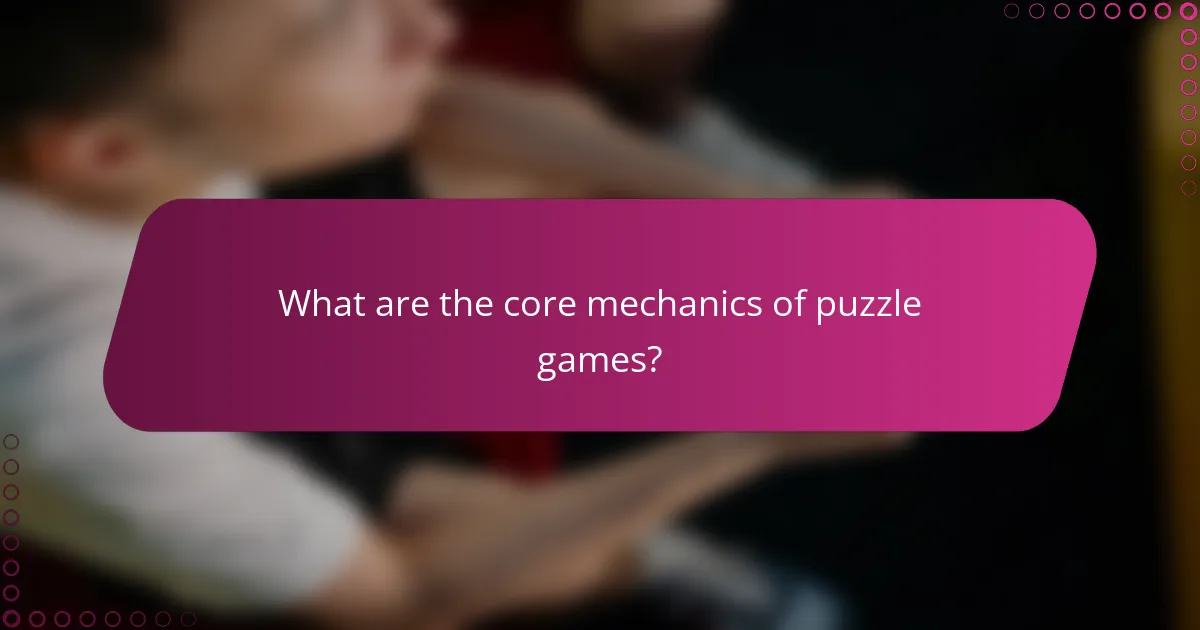
What are the core mechanics of puzzle games?
Puzzle game mechanics vary significantly across genres, impacting difficulty levels. Core mechanics include logic puzzles that require deductive reasoning, pattern recognition challenges that test spatial awareness, and physics-based puzzles that involve manipulation of objects. Each genre employs unique attributes to create distinct experiences. For instance, tile-matching games focus on quick reflexes, while narrative-driven puzzles emphasize story integration. Difficulty levels can range from simple, accessible puzzles for casual players to complex, multi-layered challenges for experienced gamers. Balancing these mechanics is crucial for player engagement and satisfaction.
How do puzzle mechanics influence player engagement?
Puzzle mechanics significantly enhance player engagement by creating challenges that stimulate problem-solving. Different genres utilize varying difficulty levels to cater to diverse player preferences. For example, casual puzzle games often have simpler mechanics, while complex strategy games feature intricate puzzles requiring critical thinking. This variation in difficulty can foster a sense of accomplishment, keeping players motivated. Moreover, unique attributes such as time constraints or limited moves can intensify engagement, offering a rewarding experience as players navigate through challenges.
Which attributes define puzzle difficulty levels?
Puzzle difficulty levels are defined by attributes such as complexity, time constraints, and required skills. Complexity refers to the number of elements and their interconnections. Time constraints can affect how quickly a puzzle must be solved. Required skills include logical reasoning, pattern recognition, and spatial awareness. These attributes vary across genres, influencing the overall challenge presented to players.
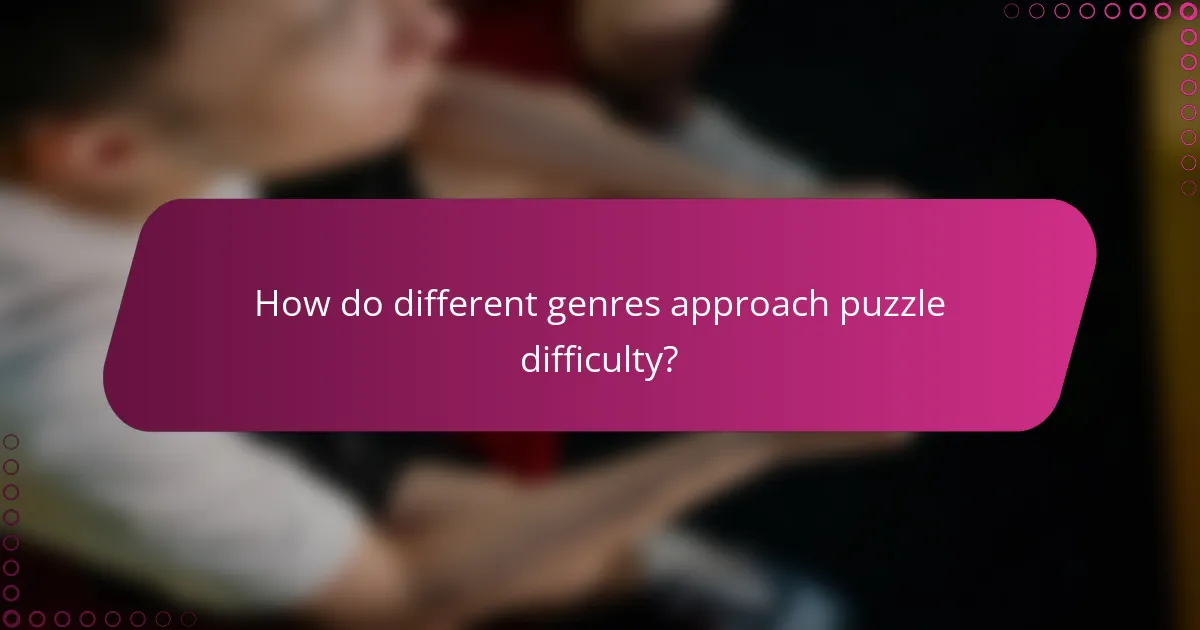
How do different genres approach puzzle difficulty?
Different genres approach puzzle difficulty by varying complexity, mechanics, and player engagement. Action-adventure games often blend puzzles with combat, requiring quick thinking. In contrast, traditional puzzle games focus solely on logic and problem-solving, offering a structured difficulty curve.
Role-playing games may integrate puzzles into narrative elements, enhancing immersion while challenging players with variable difficulty based on character skills. Casual games often simplify puzzles to attract broader audiences, prioritising accessibility over challenge.
Overall, the genre significantly influences puzzle design, impacting player experience and satisfaction.
What are the characteristics of casual puzzle games?
Casual puzzle games typically feature simple mechanics, low-stress environments, and accessible designs. They prioritise enjoyment over competition, often incorporating colourful graphics and engaging soundtracks. The difficulty levels gradually increase, allowing players to develop skills without feeling overwhelmed. Unique attributes include innovative gameplay elements and social features that encourage sharing progress.
How do narrative-driven puzzles compare to traditional formats?
Narrative-driven puzzles often provide a richer, more immersive experience compared to traditional formats. They engage players through storytelling, enhancing emotional investment and cognitive challenge. Traditional puzzles typically focus on mechanics and logic, sometimes lacking narrative depth.
Narrative-driven puzzles can feature unique attributes like character development and plot progression, which deepen engagement. They often present rare attributes, such as multiple outcomes based on player choices, adding replayability. In contrast, traditional puzzles generally emphasise root attributes like problem-solving and logical reasoning, focusing on a single solution.
Overall, narrative-driven puzzles cater to players seeking an engaging story alongside challenge, while traditional formats appeal to those prioritising pure logic and mechanics.
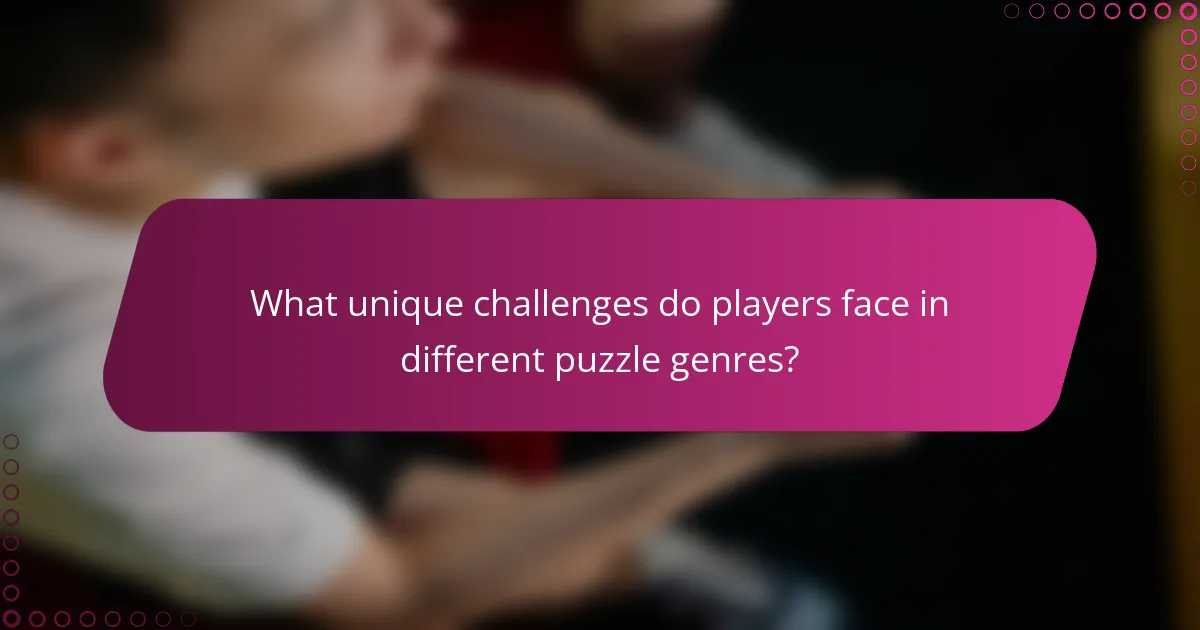
What unique challenges do players face in different puzzle genres?
Players face unique challenges in puzzle genres due to varying mechanics and difficulty levels. Each genre, such as logic puzzles or match-three games, presents distinct obstacles that require different skills. For instance, logic puzzles often demand critical thinking and pattern recognition, while match-three games may emphasise quick reflexes and strategic planning. Additionally, the complexity of puzzles within each genre can differ significantly, affecting player experience and engagement.
How does time pressure affect puzzle-solving in competitive games?
Time pressure generally enhances focus and urgency, potentially improving puzzle-solving speed in competitive games. However, excessive pressure can lead to mistakes and hinder performance. Players often experience a balance between motivation and stress, influencing their ability to solve puzzles effectively. Competitive environments may vary in how time constraints affect different puzzle genres, with some benefiting from quick decision-making while others require careful deliberation.
What role does spatial reasoning play in puzzle difficulty?
Spatial reasoning significantly influences puzzle difficulty by determining how players visualise and manipulate objects in their minds. Puzzles requiring advanced spatial reasoning often present higher challenges, as they demand players to understand complex relationships among pieces. For example, 3D puzzles typically require a greater level of spatial awareness than 2D puzzles, making them more difficult. This relationship between spatial reasoning and difficulty is evident across various puzzle genres, affecting player engagement and problem-solving strategies.

Which puzzle mechanics are most frequently associated with higher difficulty?
Puzzle mechanics that often lead to higher difficulty include time constraints, complex logic requirements, and multi-layered puzzles. These mechanics challenge players by increasing cognitive load and requiring strategic thinking. For instance, mechanics like limited moves or hidden information elevate the challenge level significantly. Additionally, puzzles that integrate multiple genres, such as combining logic with spatial reasoning, often result in a more complex gameplay experience.
How do complex rule sets impact player experience?
Complex rule sets can enhance player experience by adding depth and challenge. They encourage critical thinking and problem-solving, making gameplay more engaging. However, overly complicated rules can frustrate players, leading to disengagement. Balancing complexity with clarity is essential for maintaining player interest across puzzle game genres.
What are the effects of multi-layered puzzles on difficulty perception?
Multi-layered puzzles can increase difficulty perception by adding complexity and depth. Players often feel more challenged due to the need for strategic thinking and problem-solving across multiple layers. This enhanced challenge can lead to greater engagement and satisfaction. Moreover, the cognitive load increases as players navigate through various interconnected elements, making the experience more immersive.
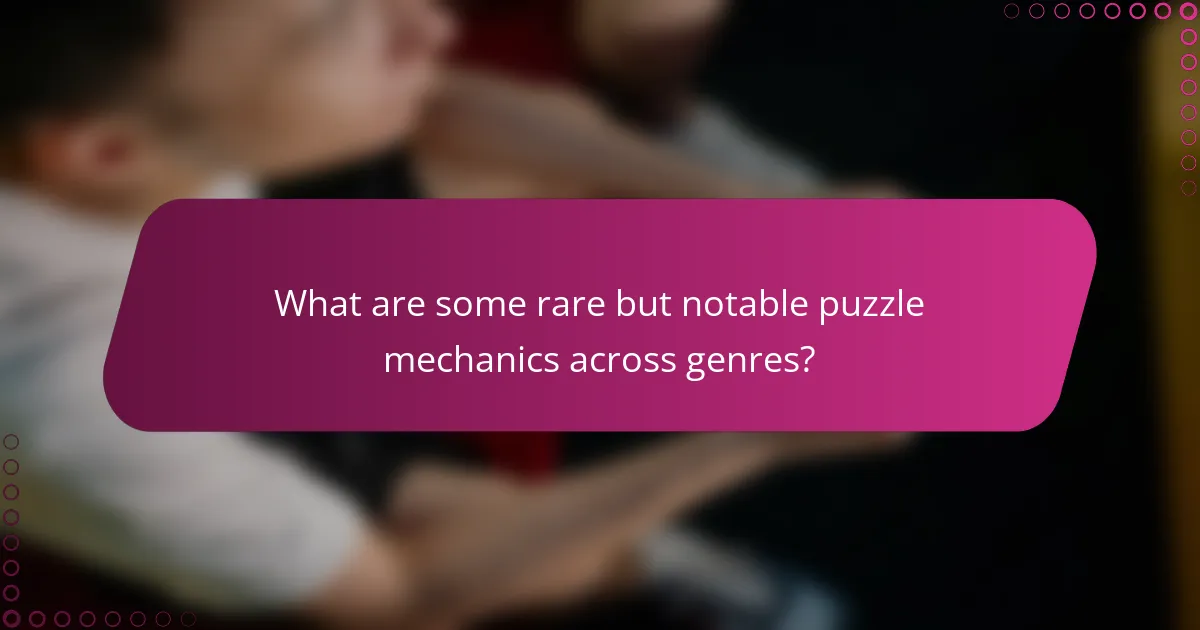
What are some rare but notable puzzle mechanics across genres?
Rare puzzle mechanics across genres include unique elements that challenge players in innovative ways. Examples are environmental manipulation in “Portal,” where players shift space to solve puzzles, and time manipulation in “Braid,” allowing players to rewind actions for strategic solutions. Another notable mechanic is the use of narrative choices in “The Stanley Parable,” where player decisions impact puzzle resolution and outcome. Additionally, “The Witness” features a rare mechanic of connecting visual patterns to unlock paths, emphasising observation and spatial reasoning. These mechanics enhance engagement and complexity across different puzzle game genres.
How do environmental factors influence puzzle-solving in immersive games?
Environmental factors significantly influence puzzle-solving in immersive games by shaping player engagement and cognitive challenges. Elements such as lighting, sound, and spatial design create an atmosphere that can enhance or hinder problem-solving abilities. For instance, a well-lit environment with clear audio cues may facilitate quicker solutions, while a dark, noisy setting could lead to frustration and confusion. Additionally, the complexity of the game’s environment can introduce unique challenges that require players to adapt their strategies, impacting the overall difficulty level of puzzles across various genres.
What unique mechanics are found in indie puzzle games?
Indie puzzle games often feature unique mechanics that enhance gameplay. These mechanics include non-linear problem-solving, environmental interactions, and innovative use of narrative to guide players.
Many indie puzzle games implement mechanics like time manipulation, allowing players to alter the flow of time to solve challenges. Another unique aspect is the integration of player choices that affect puzzle outcomes, creating a personalised experience.
Additionally, some games introduce unconventional controls or perspectives, requiring players to think outside traditional gameplay norms. These mechanics contribute to a distinctive and engaging puzzle-solving experience not typically found in mainstream titles.
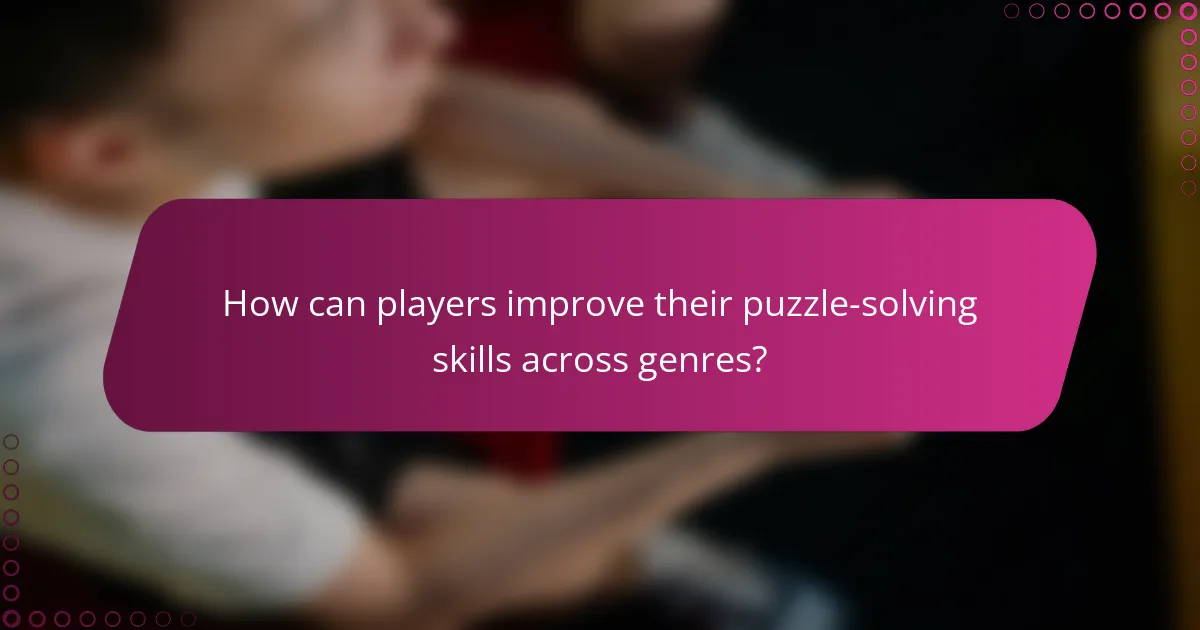
How can players improve their puzzle-solving skills across genres?
Players can improve their puzzle-solving skills by practicing different genres and understanding their mechanics. Engaging with various puzzle types enhances adaptability and critical thinking. Analyzing difficulty levels across genres helps identify personal strengths and weaknesses. For example, logic puzzles may require analytical skills, while spatial puzzles emphasise visual reasoning. Regular practice can lead to improved performance and enjoyment in solving puzzles.
What strategies can enhance problem-solving abilities in puzzle games?
Engaging in specific strategies can significantly enhance problem-solving abilities in puzzle games. Techniques such as breaking down complex puzzles into smaller components, practicing regularly, and analyzing past mistakes foster skill development.
Utilising varied genres exposes players to diverse mechanics, improving adaptability. For instance, logic puzzles enhance critical thinking, while spatial puzzles boost visual processing. Collaborating with others can provide new perspectives, enriching the problem-solving process.
Additionally, setting personal challenges within games encourages growth. Tracking progress and reflecting on strategies used can identify effective approaches, reinforcing learning. Embracing these strategies cultivates a more robust problem-solving skill set in puzzle gaming.
Which common mistakes should players avoid when tackling difficult puzzles?
Players should avoid overthinking, rushing, and ignoring clues when tackling difficult puzzles. These common mistakes can hinder progress and increase frustration.
Overthinking leads to confusion and second-guessing decisions. Rushing can result in overlooking essential details or clues. Ignoring available hints or tools diminishes problem-solving efficiency.
Additionally, players should refrain from sticking to a single approach. Exploring various strategies can reveal new perspectives and solutions. Embracing patience is crucial; complex puzzles often require time to solve.
What best practices can help in mastering puzzle mechanics?
To master puzzle mechanics, players should practice patience, analyse patterns, and experiment with different strategies. Understanding genre-specific challenges enhances problem-solving skills.
1. Familiarise with mechanics: Learn the rules and objectives unique to each puzzle genre.
2. Start with easier levels: Build confidence and understanding before tackling harder puzzles.
3. Break down puzzles: Analyse individual components to identify solutions.
4. Use hints wisely: Leverage hints to guide but avoid over-reliance.
5. Reflect on failures: Analyse mistakes to improve future attempts.
